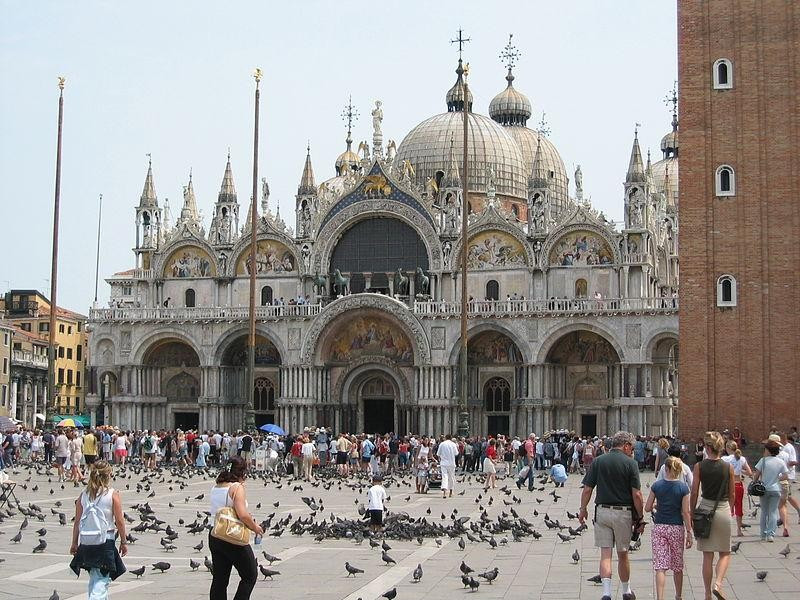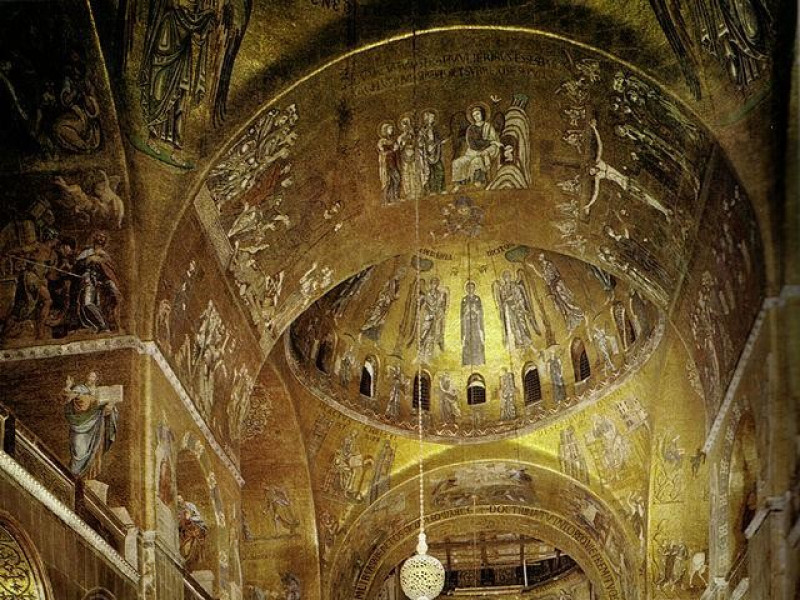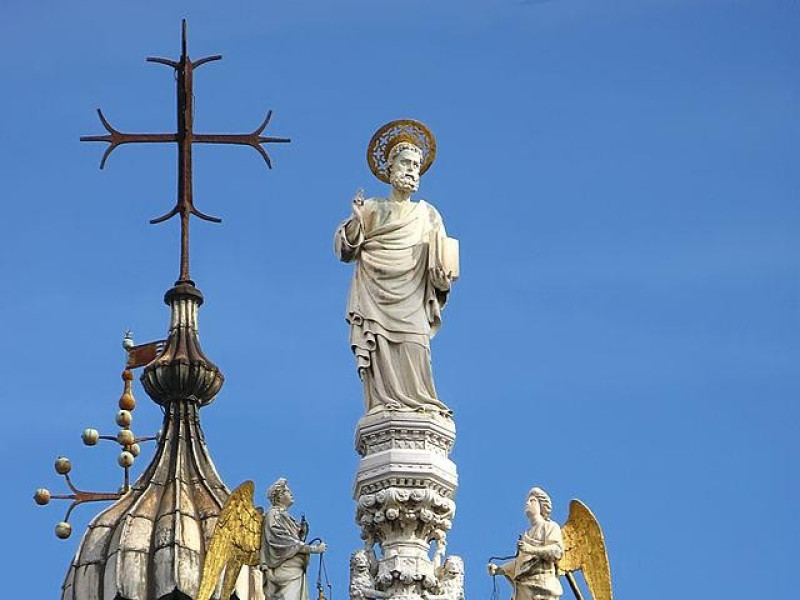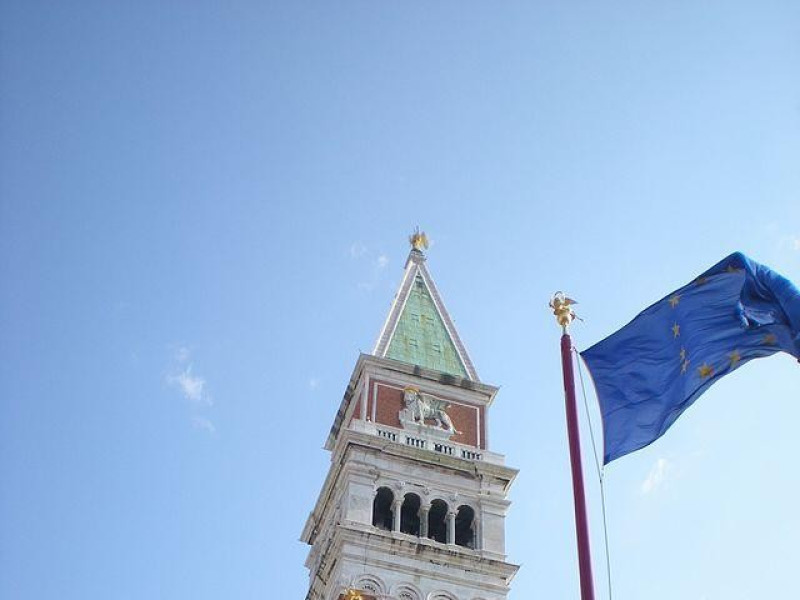Basilica di San Marco
The St. Marc Basilica is the main Cathedral of Venice, seat of the Patriarch and symbols of the city. The first Church dedicated to St. Marc was built next to the Ducal palace in 820 to house the Saint's relics stolen, according to tradition, in Alexandria of Egypt by two Venetian merchants. Dates from the ninth century also the first bell tawer. The Basilica follows closely the size and the facility of the previous building. The beautiful golden mosaics decoration of the interior is already almost complete at the end of the twelfth century, by the first half of the thirteenth century was built a vestibule (narthex) on the western arm. The following centuries saw the Basilica rich continually of columns, friezes, marbles, sculptures and gold brought to Venice on merchant ships that came from the East. The domes were raised with Byzantine and Fatimid construction techniques, covered with lead sheets. In the fifteenth century, with the decoration of the upper part, it defines the current appearance. Finally they were built the Baptistery and the Chapel of St. Isidore of Chios (XIV century), the Sacristy (XV) and the Zen Chapel (XVI). On the outside, it is divided into three different registers, it prevails the width. The facade has two orders: one on the ground floor, punctuated by five large portals, and a terrace covered on four arches. The marble facade dates from the thirteenth century and mosaics, bas-reliefs and a large amount of heterogeneous polychrome material. Among the mosaics on the facade, the only thirteenth is the first portal to the left. Among the works of art from Constantinople, the most famous is represented by the gilded bronze and silver horses placed above the main door (after a long restoration, the horses are now preserved in the Basilica Museum). The interior has a Greek cross, with five domes distributed in the center and along the axes of the cross. The naves are divided by columns and pillars covered with polychrome marble. The marble floor is designed with geometric forms and figures of animals. The sanctuary is separated from the rest of the Basilica by a Byzantine iconostasis, made up of eight columns in red marble and topped by a crucifix and statues of Pier Paolo and Jacobello da Masegne, a masterpiece of Gothic sculpture (XIV century). The presbytery leads to the sacristy and a fifteenth century church dedicated to St. Theodor. The mosaics in the Basilica covers a very broad time: the oldest mosaics are those of the nave, made at the end of the eleventh century by Greek and Venetians artists.







